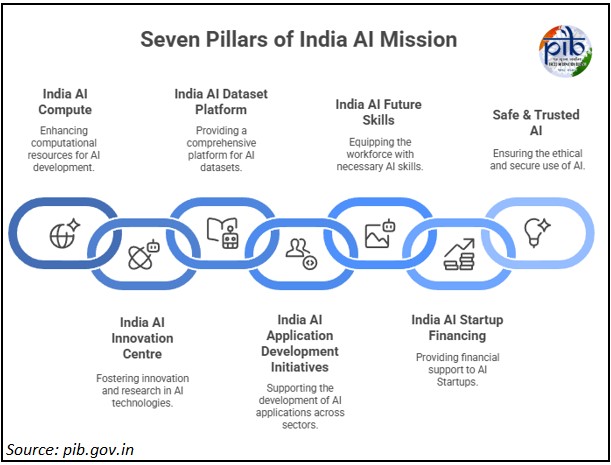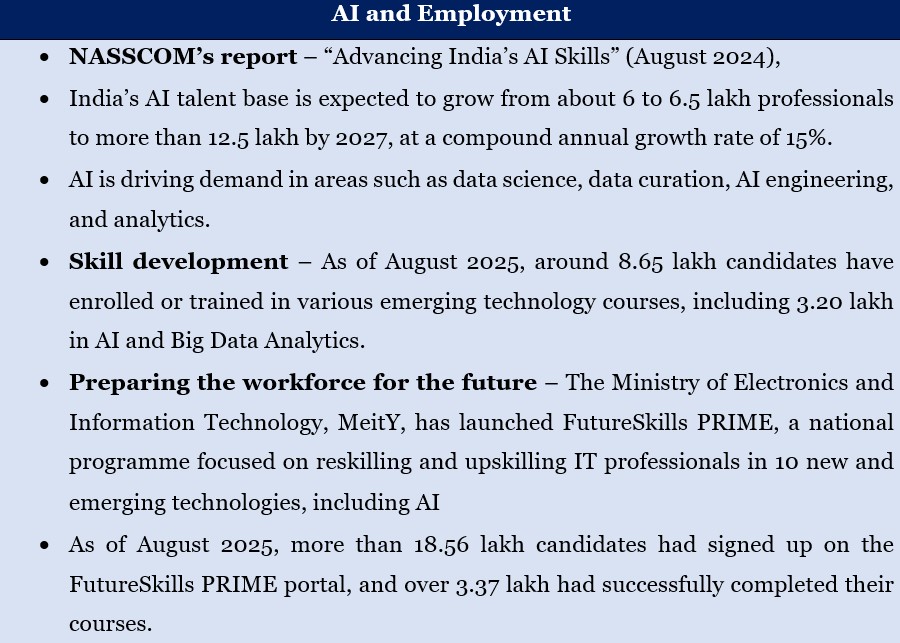Mains: GS III – Science and technology
Why in News?
Recently the artificial intelligence (AI) landscape is expanding in India and projected to grow faster in the future.
What is the status AI Ecosystem in India at Present?
Stanford AI Index place India among the top 4 countries in AI skills, capabilities, and policies.
What are the seven pillars of the IndiaAI mission?

A GPU or Graphics Processing Unit is a powerful computer chip that helps machines think faster, process images, run AI programs, and handle complex tasks more efficiently than a regular processor.
What are the other Key Government Initiatives and Policy Push?
What is India AI Impact Summit 2026?
What are some key areas where AI is improving everyday life?

What are the recently Proposed Implementation Roadmap?
What lies ahead?
Reference